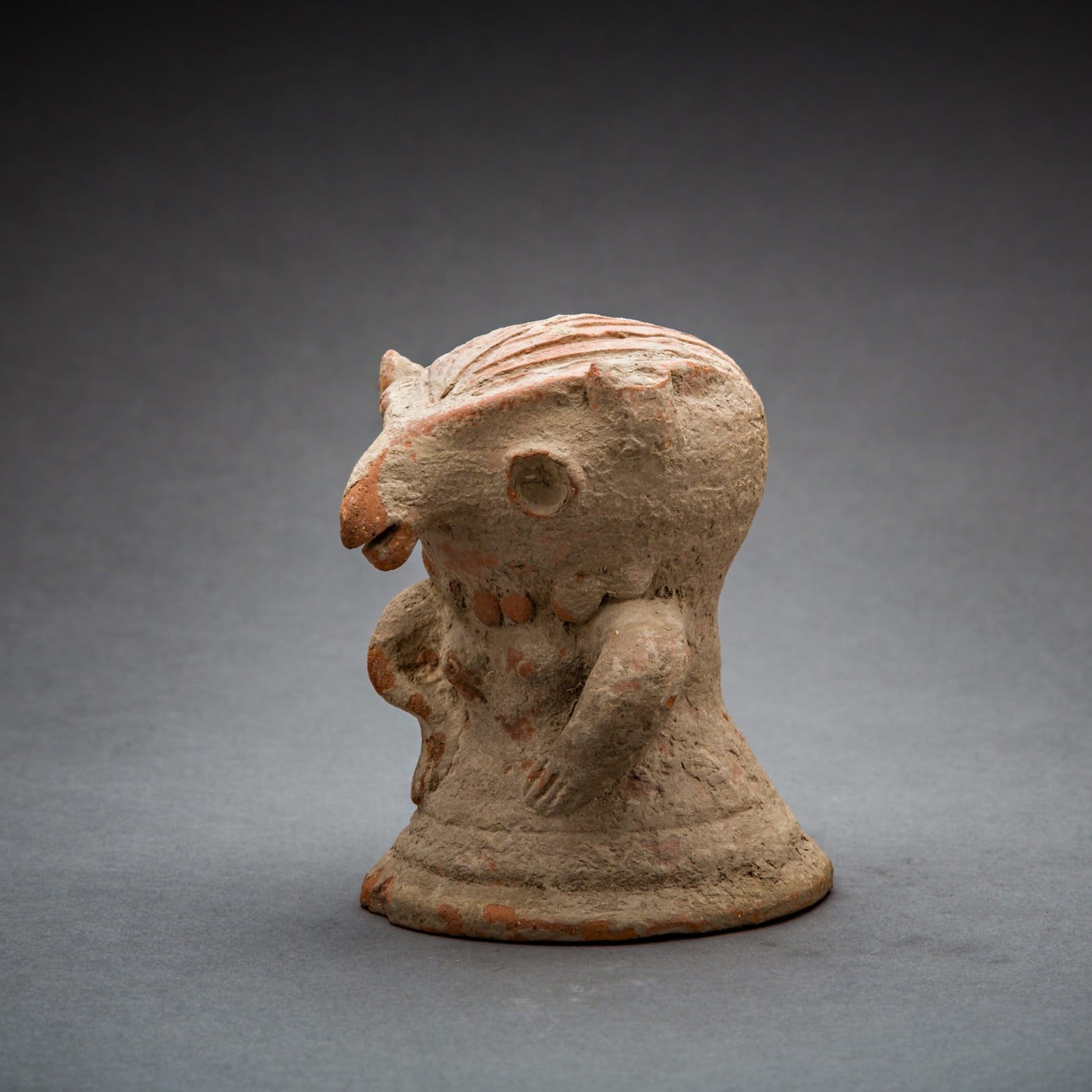Terracotta Figurine of a Standing Woman, 2800 BCE - 2600 BCE
Terracotta
height 11.4 cm
height 4 1/2 in
height 4 1/2 in
LO.1172
Further images
Conical female figurine portrayed standing, her large squatted vest folded at the bottom in four creases, her bulging shoulders and bent arms close to the body. Both breasts and the...
Conical female figurine portrayed standing, her large squatted vest folded at the bottom in four creases, her bulging shoulders and bent arms close to the body. Both breasts and the necklace are applied on the body. The angular face with applied facial features comprising continuous lines in relief as eyebrows, sunken rounded eyes below, mouth and nose converging into a protruding beak. The hair combed backwards between two enlarged upturned earlobes. Her hands palms down and attached to the vest.
Figurines with similarly applied facial features have been traditionally ascribed to the Bajaur Valley at the border between Pakistan and India, in the sphere of influence of the early Harappan civilization during the so called Regionalisation Era (2800-2600 BC).
Incredibly enough, the extraordinary blend of realism -imbued in the detailed torso and arms of this figurine, and surrealism -of her large facial traits- would not feel out of place in a contemporary setting, thus transcending the boundaries of time and space.
For a discussion on Harappan figurines see: J.M. Kenoyer, Ancient Cities of the Indus Valley Civilization, 1998.
Figurines with similarly applied facial features have been traditionally ascribed to the Bajaur Valley at the border between Pakistan and India, in the sphere of influence of the early Harappan civilization during the so called Regionalisation Era (2800-2600 BC).
Incredibly enough, the extraordinary blend of realism -imbued in the detailed torso and arms of this figurine, and surrealism -of her large facial traits- would not feel out of place in a contemporary setting, thus transcending the boundaries of time and space.
For a discussion on Harappan figurines see: J.M. Kenoyer, Ancient Cities of the Indus Valley Civilization, 1998.





